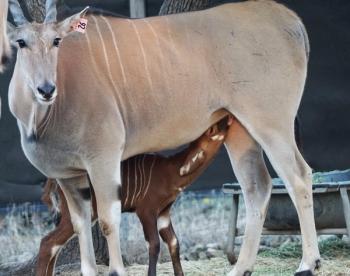
Vet Watch: What's going on with the rattlesnake vaccine (Crotalus atrox toxoid) and the USDA?
The USDA is ending automatic renewals for limited conditional licenses, putting the long-available rattlesnake vaccine at risk.
Editor’s Note (May 22, 2025): According to sources, since this conversation was recorded, the USDA may have renewed the conditional license for the Crotalus Atrox Toxoid (rattlesnake vaccine) as of Friday, May 19, 2025. The video conversation above reflects the status as of the original recording, serving as valuable context regarding the USDA's decision and the science behind the vaccine.
Below is a partial transcript, lightly edited for clarity. Watch the full video for more.
Transcript
Christopher Lee, DVM, MPH, DACVPM: Welcome to Vet Watch at dvm360. I'm your host, Dr Christopher Lee. We're talking today about the rattlesnake vaccine [Crotalus atrox toxoid] and its potential loss from the marketplace. It's my pleasure to introduce Dr Dale Wallis. She's a UC [University of California], Davis graduate, just like myself. But in addition to her DVM, she also earned a certificate in preventive medicine, which is fantastic.
She was a director of a vaccine laboratory in the town of Davis before she accepted a position at Hygieia Biological Laboratories in 1993. She quickly rose to become their vice president. You may also know their sister company, Red Rock Biologics. She is now the senior staff veterinarian at Red Rock Biologics, which manufactures the rattlesnake vaccine. Welcome, Dr Wallis.
Dale Wallis, DVM: Thank you.
Lee: So, tell us—what's going on with the rattlesnake vaccine? It may be losing USDA [US Department of Agriculture] renewal?
Wallis: It has lost USDA renewal. We believe the problem is that the USDA has changed its policy on a category of licensing called limited market conditional licenses. Conditional licenses are issued when there is no commercial product available, but there is a need. The manufacturer has to show purity, safety, and a reasonable expectation of efficacy to get this kind of license. It’s issued for things like emergency conditions—like an outbreak of some sort—or, in our case, something called a limited market. This is where products are developed to address a problem, but the market is so small [that] it doesn't warrant the cost of full licensure.
Historically, there’s been no time limit on conditional licensing. They’ve just been renewed every year or every 2 years. The USDA wants to see ongoing research for them, which we do—and that's just been the way it's been.
Recently, they changed their mind and decided to time-limit conditional limited market licenses. And in so doing, ours got timed out.
Lee: Because the rattlesnake vaccine has been on the market for quite a while. How long has it been?
Wallis: Twenty-one years.
Lee: Twenty-one years—wow. And, correct me if I'm wrong, there is no other rattlesnake vaccine on the market?
Wallis: To our knowledge, this is the only commercial vaccine against venom.
Lee: So, this is it. There are no other options for rattlesnake vaccination, other than treatment thereafter. Is that correct?
Wallis: Correct.
Lee: How does the rattlesnake vaccine work? Would you walk us through that?
Wallis: Sure. My partner and I both had cats that were bitten by rattlesnakes in Northern California—mine in 2002, his in 2003—and both cats nearly died. Anecdotally, at least, the stories were that a dog would get bit the first year and get very, very sick—maybe nearly die. Get bit the second year, he’d get sick, but not as bad. Third year, he’d swell up but wouldn’t get sick. Fourth year, he didn’t even react to getting bit. So, there was evidence that a dog could mount an immune response to venom.
We also knew about antivenom, which has been around for about 70 years. It’s generated by vaccinating animals repeatedly to build up a titer. That serum becomes something that can neutralize venom; it can be given to a human or an animal to counteract an envenomation.
So, we were aware that there was a biological basis not only for developing immunity to venom, but specifically that a dog could do it as well. We started working on developing technology to process venom into something that would make a vaccine.
This is something the Army tried many years ago because of troops stationed in jungles and that sort of thing, but it was never commercially viable. They never got something that would develop the kind of immunity needed or persist. We were successful, so there's been a lot of interest in figuring out what we did and how we did it.
We started testing the vaccine in mice. The reason we started with mice is because antivenom is tested in mice. It’s applied to dogs, cats, horses, people—and all of it gets tested in mice.
We figured the mouse would be a good model to see if we were getting the kind of immunity we needed from this vaccine. Lo and behold, you vaccinate mice, challenge them with venom—they survive. The controls don’t.
There is a published paper on this that repeats our work and shows the vaccine is efficacious in mice. We looked at how dogs and mice seroconvert to the vaccine; they’re virtually identical in terms of antibody generation, so we felt the mouse would be a good model for the dog.
We applied for the license, and the USDA issued the conditional license once we’d satisfied purity and safety and showed enough data to where they believed there was a reasonable expectation of efficacy. The USDA license was issued in 2004.
Lee: That's a lot of information on how that works and why it can be trusted. What is the protocol for vaccination of a pet?
Wallis: When we did our work, we used border collies and greyhounds—2 breeds known to have somewhat different immune system responses that are suppressed or altered. We were trying to make sure the vaccine we made would work for all breeds of dogs.
The dogs ranged in weight from about 35 to 70 lb. We found that 2 doses a month apart gave good immunity that persisted for at least 6 to 9 months. That would be enough for dogs in the northern half of the US, where rattlesnake season is about 6 to 9 months.
In the southern US, there's often year-round exposure. So, based on our work, the label is for annual revaccination. But in the South, they’ve found that 1 dose every 6 months—or 2 doses a year—is more beneficial.
Border patrol dogs get 3 doses every 4 months due to their higher level of exposure.
Later, we expanded to include English mastiffs—dogs up to 175 lb. We found that 2 doses didn’t provide the titer rise we wanted. We gave a third dose to that group and saw good titers, but it took 3 doses. I don’t know why larger dogs have that issue, but they do. That’s not on the label—that’s just experimental data.
We also adjusted for small dogs. Dogs under 25 lb get 3 doses in the initial sequence, but not for the same reason as the large dogs. Smaller dogs have smaller blood volumes, so at the same titer, a 10-lb dog and a 50-lb dog have a 5-fold difference in resistance. We achieve a higher titer in small dogs by giving a third dose.
They do great with single-dose boosters afterward, but it takes 3 for the initial sequence.
Newsletter
From exam room tips to practice management insights, get trusted veterinary news delivered straight to your inbox—subscribe to dvm360.






